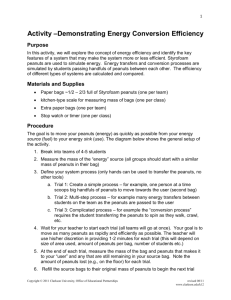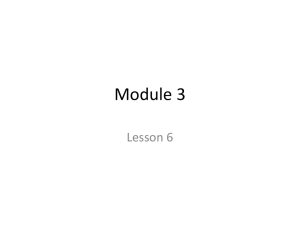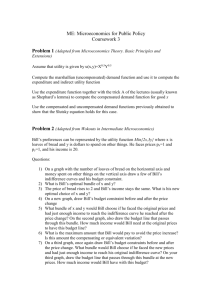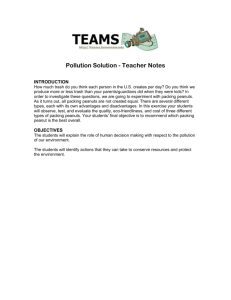AP Economics Elasticity FRQs
advertisement
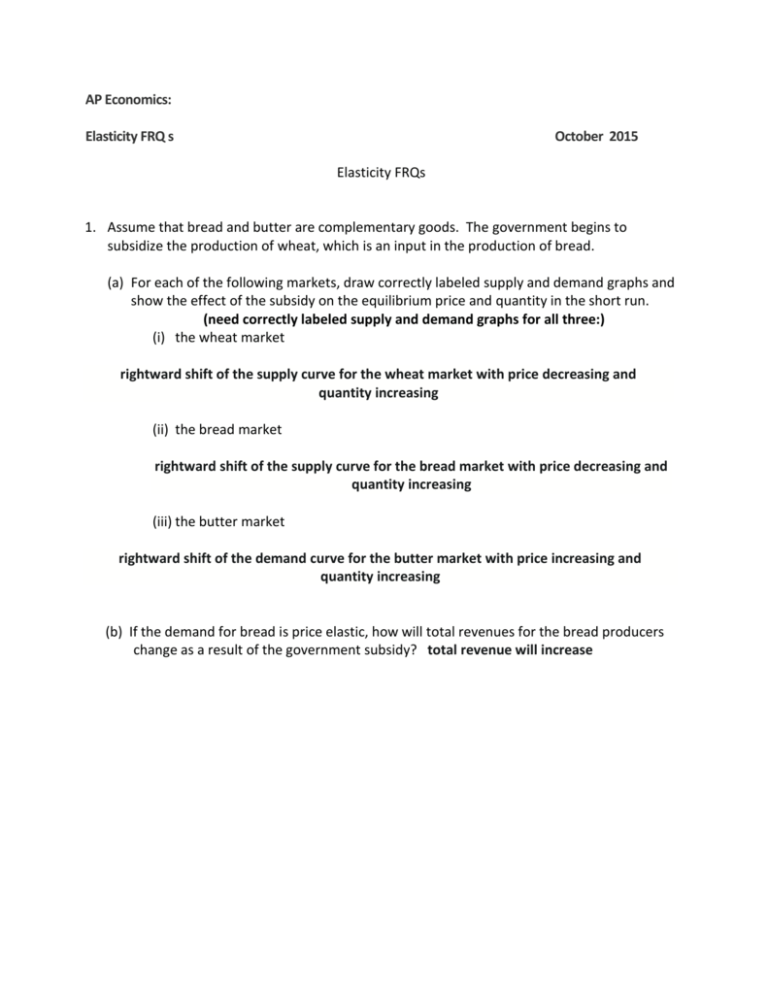
AP Economics: Elasticity FRQ s October 2015 Elasticity FRQs 1. Assume that bread and butter are complementary goods. The government begins to subsidize the production of wheat, which is an input in the production of bread. (a) For each of the following markets, draw correctly labeled supply and demand graphs and show the effect of the subsidy on the equilibrium price and quantity in the short run. (need correctly labeled supply and demand graphs for all three:) (i) the wheat market rightward shift of the supply curve for the wheat market with price decreasing and quantity increasing (ii) the bread market rightward shift of the supply curve for the bread market with price decreasing and quantity increasing (iii) the butter market rightward shift of the demand curve for the butter market with price increasing and quantity increasing (b) If the demand for bread is price elastic, how will total revenues for the bread producers change as a result of the government subsidy? total revenue will increase 2. Utility and price elasticity of demand are important concepts in explaining consumer behavior. (a) Define marginal utility extra satisfaction received from consuming another unit of a good or service (b) The table below shows the quantities, prices, and marginal utilities of two goods, fudge and coffee, which Mandy purchases: Quantity of purchase Price per pound Marginal utility of last pound Fudge 10 pounds $2 12 Coffee 7 pounds $4 20 Mandy spends all her money and buys only these two goods. In order to maximize her utility, should Mandy purchase more fudge and less coffee, purchase more coffee and less fudge, or maintain her current consumption? Explain. more fudge, less coffee: MU/$ for fudge is greater than MU/$ for coffee (c) Assume that consumers always buy 20 units of good R each month regardless of its price. (i) What is the numerical value of the price elasticity of demand for good R? Zero – perfectly inelastic (ii) If the government implements a per-unit tax of $2 on good R, how much of the tax will the seller pay? seller will pay none of the tax (or perfectly inelastic buyer will pay all of the tax) 3. Sasha is a utility-maximizing consumer who spends all of her income on peanuts and bananas, both of which are normal goods. (a) Assume that the last unit of peanuts consumed increased Sasha's total utility from 40 utils to 48 utils and that the last unit of bananas consumed increased her total utility from 52 utils to 56 utils. (i) If the price of a unit of peanuts is $ 1 and Sasha is maximizing utility, calculate the price of a unit of bananas. MUp$peanuts = 8; MUlast banana = 4, and a maximum utility MUp$ = 8, so price of last banana = 4/8 or $.50 (ii) If the price of a unit of peanuts increases and the price of a unit of bananas remains unchanged from the price you determined in part (a)(i), how will Sasha's purchase of peanuts change? Sasha will purchase fewer peanuts (b) Assume that the cross-price elasticity of demand between peanuts and bananas is positive. A widespread disease has destroyed the banana crop. What will happen to the equilibrium price and quantity of peanuts in the short run? Explain. Equilibrium price and quantity will both increase. Peanuts and bananas are substitutes (they have a positive cross-elasticity), so an increase in the price of bananas will cause demand for peanuts to increase. (c) Assume that the price of bananas increases. (i) Will the substitution effect increase, decrease, or have no effect on the quantity of bananas demanded? Decrease (ii) What happens to Sasha's real income? Decrease 4. The graph below illustrates the market for calculators. S denotes the current supply curve, and D denotes the demand curve. (a) Calculate the producer surplus before the tax. $135 ( ½ x $3 x 90) (b) Now assume a per-unit tax of $2 is imposed whose impact is shown in the graph above. (i) Calculate the amount of tax revenue $120 ($2 x 60) (ii) What is the after-tax price that the sellers now keep? $4 (iii) Calculate the producer surplus after the tax. $60 (½ x $2 x 60) (c) Is the demand price elastic, inelastic, or unit elastic between the prices of $5 and $6? Explain. Demand is price elastic as it is >1 using midpoint calculation formula. Ed = (30/75) / (1/5.5) = 2.2 OR Demand is price elastic as Total Revenue increases from $360 ($6 x 60 units) to $450 ($5 x 90 units) as price decreases from $6 to $5 (c) Assuming no externalities, how does the tax affect allocative efficiency? Explain. Allocation is no longer efficient because of the loss of surplus (creation of deadweight loss) 5. The diagram above shows the domestic supply and demand for good X in the country of Placonia. (a) If the current world price of good X is PW, does Placonia export or import good X? Explain. Placonia imports the good because they can get it cheaper at the world price (b) Given your answer in part (a), indicate the quantity of good X that Placonia exports or imports. Quantity demanded is 350, quantity supplied is 50, so quantity imported is 350 – 50 or 300 (c) Assume the government of Placonia imposes a tariff of good X, increasing the price from PW to Pt. Using the labels in the graph, indicate the change in each of the following in Placonia: (i) consumer surplus consumer surplus decreases from PwNH to PtMH, or a decrease ofMNPwPt (ii) producer surplus producer surplus increases by JKPtPW (d) Indicate how employment in the domestic industry that produces good X is affected by the tariff. employment increases because of increased domestic production


